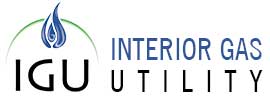BY ELWOOD BREHMER, ALASKA JOURNAL OF COMMERCE
Legislation key to the future of the Interior Energy Project is being investigated in both the House and Senate.
Parallel pieces House Bill 105 and Senate Bill 50 would remove the North Slope gas source requirement from a $275 million financing package passed in 2013 and provided to the Alaska Industrial Development and Export Authority for the project.
Gov. Bill Walker submitted the bills after the capital cost for a Slope gas plant and associated liquefied natural gas trucking proposal AIDEA partnered on came in tens of millions of dollars higher than expected.
The Sustainable Energy Transmission and Supply Fund package, or SETS, included authority for AIDEA to loan $125 million at up to 3 percent interest and bond for another $150 million towards the ultimate goal of getting lower cost natural gas to the Fairbanks area.
Since low-cost Slope gas with high capital and transportation costs didn’t pencil out, the Interior Energy Project team is asking the Legislature for the ability to investigate a Cook Inlet source. Inlet wholesale gas would generally cost at least twice as much, but come with much lower infrastructure and shipping prices.
Senate Bill 23, which passed with broad support in 2013, included the North Slope language when the now abundant Cook Inlet gas supply seemed far-fetched.
Walker’s bills also remove the Interior destination requirement for LNG, a deletion that concerns members of both the House and Senate Energy committees.
If LNG shipments to Fairbanks are successful, it is thought gas could be sent to other parts of the road system as well.
Sen. Peter Micciche, R-Soldotna, said he would like to see language that includes “more economically feasible long-term options as well” included in the bills. Micciche has recently been advocating for a small gas pipeline from Cook Inlet to the north. Such a pipeline could not be paid for with the SETS money currently because the legislation defines the scope of the work as an LNG project, not one transporting vaporized natural gas.
In the House, Anchorage Republican Reps. Mike Hawker and Craig Johnson repeatedly said they are concerned about handing AIDEA a “blank check” to look at a new Interior Energy Project option when the first one failed.
“Why are you asking to take the money that is left and spend it on whatever project you want?” Hawker asked project staff and AIDEA leadership during a committee meeting.
AIDEA has approved about $50 million of the SETS loan money for distribution infrastructure work to the Interior Gas Utility and Fairbanks Natural Gas.
Hawker also questioned AIDEA’s reasoning for wanting to develop a gas project from Cook Inlet to the Interior when several companies are looking at doing the same thing. He has said numerous times he doesn’t want the state competing with the private sector on an energy solution for Interior.
Acting Commerce Commissioner Fred Parady, whom Walker tasked to work closely on the project, noted to the House committee that there are no indications the private sector can deliver gas to Fairbanks residents at the community’s target cost of $15 per thousand cubic feet, or mcf, of gas.
A contract between a Hilcorp subsidiary and Fairbanks Natural Gas would get a small amount of LNG to the region at a $15 per mcf equivalent, but that cost does not include regasification and distribution expenses.
Johnson suggested approving a small portion of the funds to look at the feasibility of a Cook Inlet-based plan and having the project team come back to the Legislature next session for the rest of the funding if necessary.
Doing so would almost certainly push the first gas goal of late 2016 back at least a year. The Interior Energy Project team hopes to have a new plan in place before the end of the summer.
